- Author: Kathy Keatley Garvey
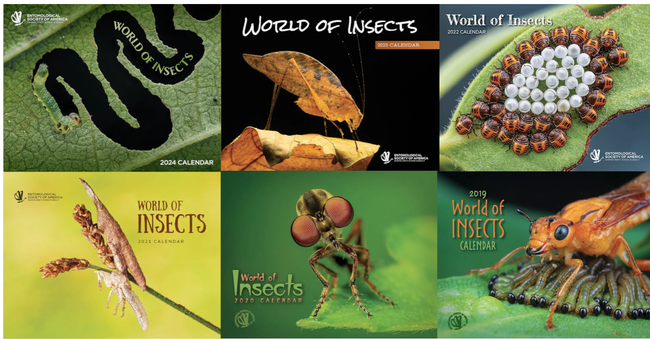
You'll see insects you've never seen before--and learn a little about them.
The cover image of the larva of the elm zigzag sawfly, Aproceros leucopoda (order Hymenoptera, family Argidae), native to Asia, is especially spectacular. It's the work of Christian Brockes of Germany.
"The elm zigzag sawfly is an east-Asian pest of elms (Ulmus spp), invasive in Europe since about 10 years ago and now also established in some North American regions," the ESA text relates. "The common name was inspired by the very distinctive patterns that their larvae leave on elm trees, while feeding. In large numbers, this species can critically damage elm populations. Often dozens of the tiny larvae--each only a few millimeters long--can be found on a single leaf, which they can skeletonize in a short period of time."
Scientists first detected this pest in the United States (Virginia) in 2021. Since 2022, it's been confirmed in four other states: Pennsylvania, North Carolina, Maryland and New York, according to research published in July 2023 in the Journal of Integrated Pest Management. The elm zigzag sawfly feeds exclusively on elms (Ulmus spp). It draws its name from the zizag-shaped pattern on the leaves as the larvae feed.
ESA prides itself on publishing world-class photography. Among the eight judges this year: Alex Wild, curator of entomology at the University of Texas and a doctoral alumnus from UC Davis. Wild studied with ant specialist Phil Ward, professor of entomology, UC Davis Department of Entomology and Nematology.
ESA issues a call for photos every January, and publishes the calendar every November. Of added interest, unselected images may appear on social media in the ESA's weekly "Arthropod Photo of the Week." Follow "Arthropod Photo of the Week" via the #arthropodPOTW hashtag on Twitter, Facebook, Instagram, and Mastodon.
We remember that an image of a hoverfly by UC Davis alumnus Alexander Nguyen appeared in the 2018 World of Insects Calendar. (See UC Davis of Entomology and Nematology website.) Judges chose his photo as one of the 12 winning images from a field of 560 entries submitted by 133 photographers from multiple continents. Nguyen captured the image at the UC Davis Stebbens Cold Canyon Reserve in April 2017, using his Canon 7D camera and a MPE 65-mm lens. Senior insect biosystematist Martin Hauser of the California Department of Food and Agriculture identified the hover fly as a male Platycheirus trichopus (Thomson, 1869).
What images are in the 2024 calendar? You'll see an ant tending treehopper nymphs, a chalcid wasp on Hemipteran eggs, stingless bees, a sunburst diving beetle, a Baltimore checkerspot butterfly, a Corsican owlfly, an ant-mimicking crab spider, a giant silk moth, an ambush bug preying on a bumble bee, a chestnut weevil, a poplar sphinx moth and an East Asian red damselfly. In addition, images that won honorable mentions share space on the calendar.
You can order the calendar here.
The 7000-member ESA, founded in 1889 and located in Annapolis, Md., is the world's largest entomological organization. It is affiliated with educational institutions, health agencies, private industry and government. Members are researchers, teachers, extension service personnel, administrators, marketing representatives, research technicians, consultants, students, pest management professionals, and hobbyists.
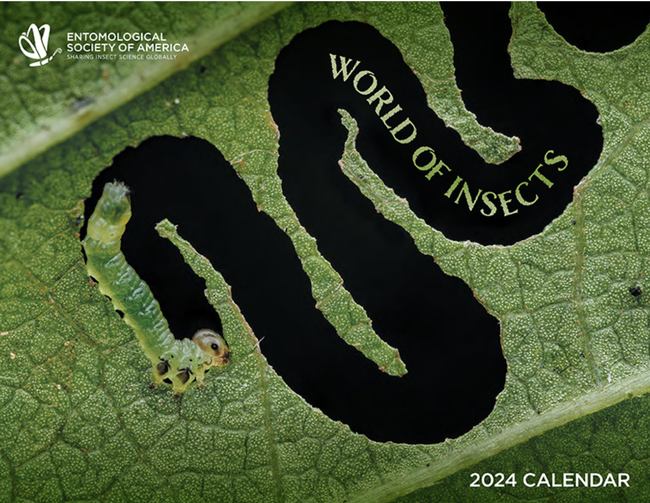
- Author: Kathy Keatley Garvey
Fifty shades of orange—with a touch of silver.
The bridal couple on the pomegranate tree wore orange and silver to celebrate their honeymoon.
The bride may have blushed. I don't know. Did she? Don't all brides blush?
The groom, in true form, looked quite dapper and dashing.
So there they were. The two of them. The blushing bride and the quite dapper-and-dashing groom.
They didn't invite me to their wedding. I was an uninvited guest, the only guest. So I felt obliged to crash their wedding and capture some images.
Just happened to have a camera with a zoom macro lens slung on my shoulder.
Who can resist insect wedding photography? That's about the only wedding photography happening during the COVID-19 pandemic.
This couple? Gulf Fritillaries: Agraulis vanillae. (See UC Davis distinguished professor Art Shapiro's website to learn more about them).
We usually see Gulf Frits on their host plant, the passionflower vine (Passiflora), where the females lay their eggs. and the cycle of eggs-to-caterpillars-to-chrysalids-to-adults continues.
But something startled this pair and off they fluttered from the passionflower vine to the nearby pomegranate tree.
Evolutionary success!
Ever seen the amazing macro photography of Alex Wild, curator of entomology at the University of Texas, Austin? He holds a doctorate in entomology from UC Davis, where he studied ant taxonomy and evolution with major professor Phil Ward. Wild also writes the incredible blog, Myrmecos: Little Things Matter, and teaches photography with colleagues at BugShot courses. He shoots Canon with an MPE-65mm lens.
On July 5, Alex Wild pinned this tweet:
"I'm pretty sure you didn't ask for this, but here's a gallery of insects having sex."
I'm pretty sure Alex Wild does not mince words.
Meanwhile, check out his "insect wedding photography" images!
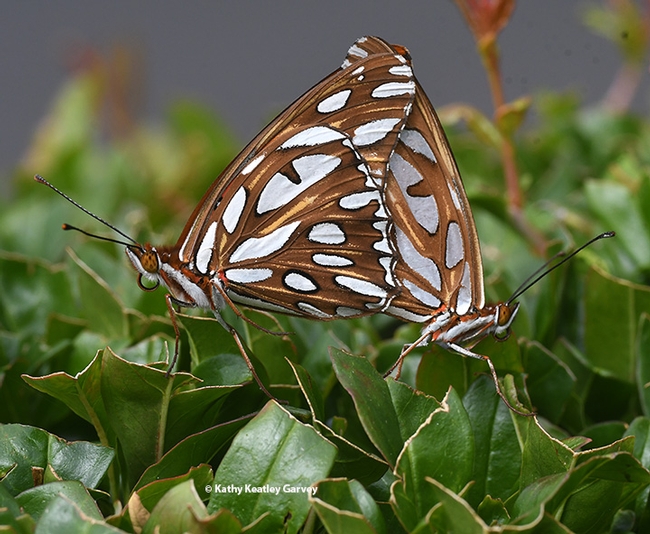
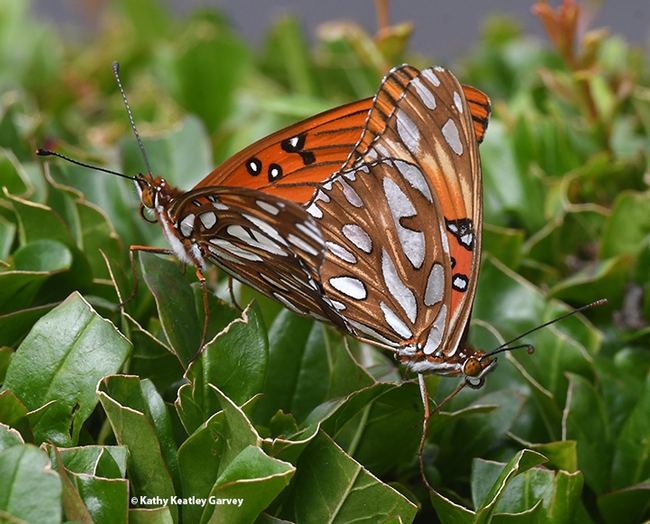
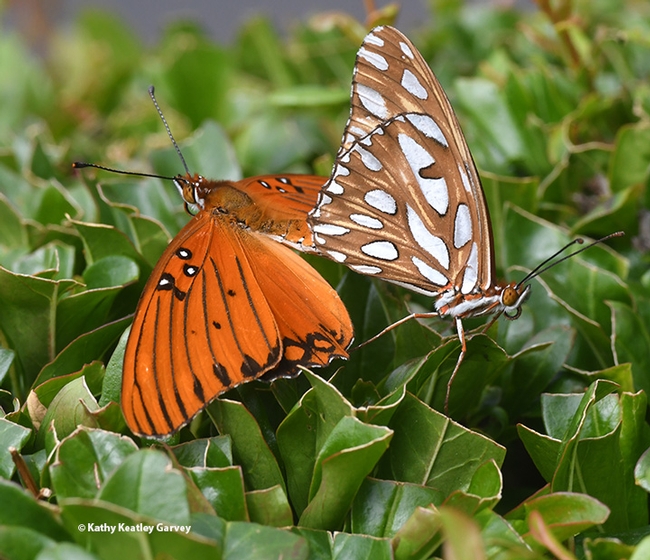
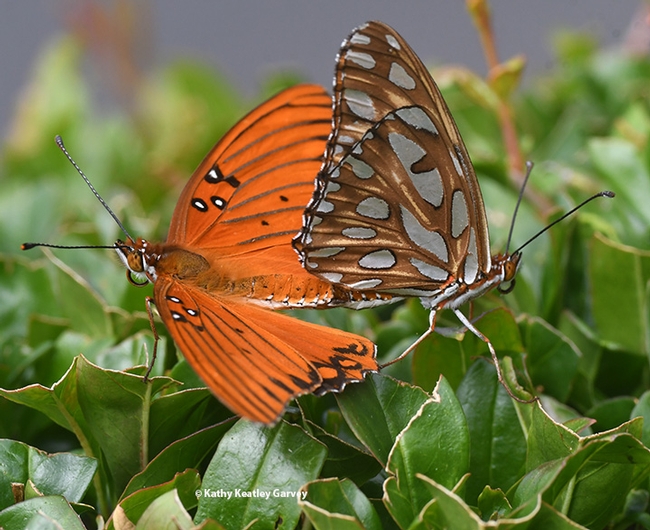
- Author: Kathy Keatley Garvey
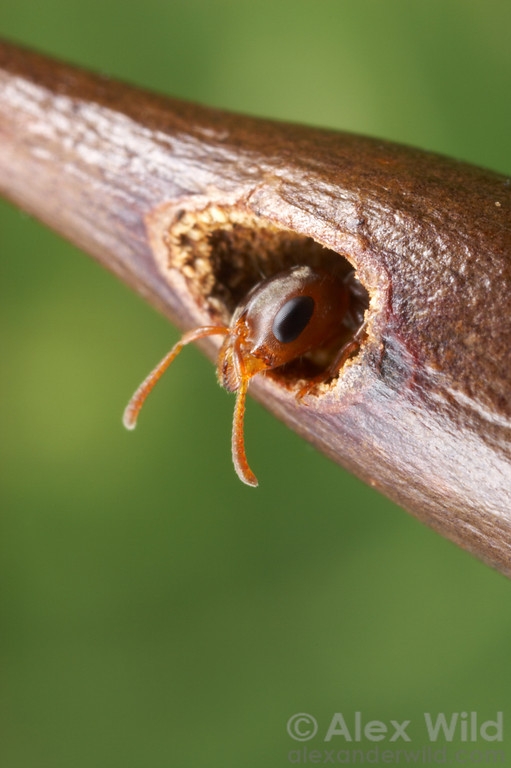
Ant specialists and other researchers also hone in on big-eyed ants for their relationships with plants.
Those attending a UC Davis seminar this week on big ants will learn all about them, including the phylogenetic morphology.
Brendon Boudinot, a Ph.D. candidate in the Phiil Ward lab, UC Davis Department of Entomology and Nematology, will speak on "Phylogenetic Morphology of the Big-Eyed Tree Ants and Kin (Formicidae: Pseudomyrmecinae)" at 4:10 p.m., Wednesday, Feb. 28 in 122 Briggs Hall.
This is one of the seminars hosted by the UC Davis Department of Entomology and Nematology for the winter quarter.
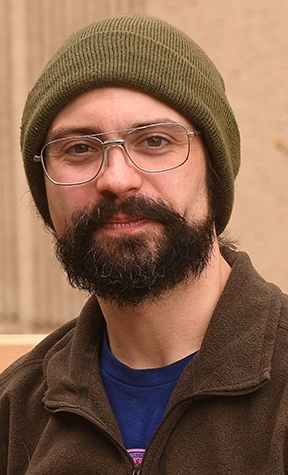
"Like their closest relatives, the infamous bulldog ants of Australia, the big-eyed tree ants have a nasty sting, but this isn't what draws our attention to them," he says. "Rather, many species of big-eyed ants have intimate relationships with plants. In the most extreme cases, the ants act as the plants' personal body guards, raining down upon perceived threats as a deluge of stings, and even pruning away competitive vegetation, forming eerily still 'satan's gardens' in South America.'
"In some cases, the plants contribute to the social wellbeing of the ants by investing in public housing, with the ants making their nests in preformed cavities within the plants, such as in the swollen thorns of various Acacia," Boudinot points out. "Indeed, these same Acacia provide the sole nutrition for their protectives ants, in the form of small, yellow, protein-rich food bodies at the tips of their leaves---in other words, the ants have become full vegans. Current evidence suggests that these tight relationships have evolved perhaps a dozen times within the big-eyed ants. However, the adaptations of these ants to living in state-sponsored societies is uncertain. It is one of the objectives of the present research to understand how the bodies of big-eyed ants have transformed over time, allowing the ants to optimize their relationship with plants."
Boudinot will be illustrating his seminar with stunning photos of big-eyed ants, the work of Alex Wild, who received his doctorate in entomology from UC Davis (studying with Phil Ward). Wild is now curator of entomology, University of Austin, Texas.
The UC Davis Entomology and Nematology's series of seminars for the winter quarter are coordinated by assistant professor Rachel Vannette; Extension apiculturist Elina Lastro Niño and Brendon Boudinot.
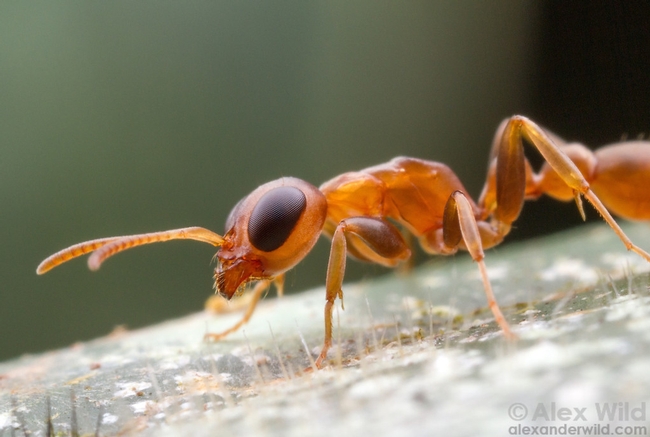
- Author: Kathy Keatley Garvey
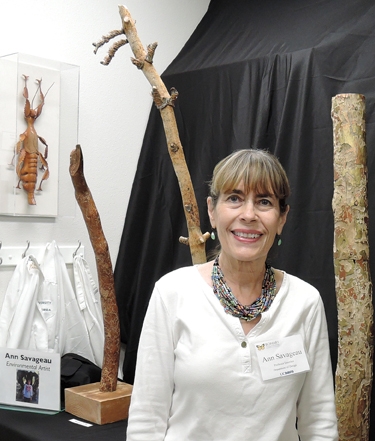
Capture images of the bees, create sculptures from beetle galleries, and depict insect motifs on clothing...
Don't miss the unique exhibition, It's Bugged: Insects' Role in Design, set Jan. 8-April 22 at the UC Davis Design Museum in Room 124 of Cruess Hall, UC Davis campus.
Beginning at noon, Monday, Jan. 8, you can view the art-and-design installation that explores the connections between people and insects. The exhibition is free and open to the public. Hours are from noon to 4 p.m. weekdays, and from 2 to 4 p.m. on Sundays through April 22.
You'll see work by UC Davis Department of Design faculty and graduate students, as well as displays from the Bohart Museum of Entomology.
The Bohart Museum will showcase insect specimens from its collection, and images from celebrated insect photographer Alex Wild, curator of entomology at the University of Texas, Austin. Wild received his doctorate in entomology in from UC Davis in 2005, studying with major professor Phil Ward.
The Design Museum exhibition also ties in with the Bohart Museum's open house, “Bug Art @ the Bohart," from 1 to 4 p.m., Sunday, Jan. 21 in Room 1124 of the Academic Surge Building on Crocker Lane. This will overlap with the Design Museum's hours on Sundays from 2 to 4 p.m., so visitors can explore both museums, said Tabatha Yang, the Bohart Museum's education and outreach coordinator.
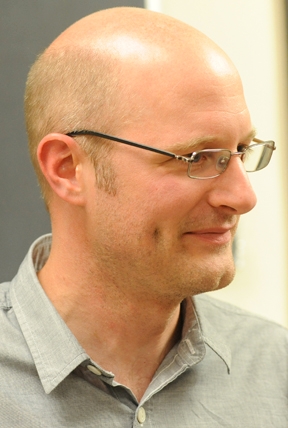
“The inspiration we draw from the natural world is endless,” said McGraw. “The challenge in the exhibit was focusing our story to the links between insects and textiles and forms. We selected key pieces from UC Davis' Joann C. Stabb Design Collection and works from collaborating artists, so the connection to insects could then be explored. Some of these relationships are centuries old, while other ways people are using insects and insect behavior is relatively new. What's exciting to me is to think about all the new products, designs, and technologies that are still to come as people continue to be inspired by insects. And what better place to encourage that than a university setting where so much creative work is already going on?”
The exhibition includes the work of several Department of Design faculty and graduate students, including professor emerita Ann Savageau and master-of-fine-art students Alicia Decker, Cory Wolffs and Lauren Kelly.
For the exhibition, Savageau created a trilogy of wall pieces made from hornet nest paper, and a set of sculptures made of wood etched into striking patterns by bark beetle larvae. The Bohart Museum open house on bark beetles featured her work last August.
Savageau describes herself as an environmental artist who creates mixed-media sculpture and installations. Her work deals with the natural world, human culture, and their intersection. Her current interests include global warming and environmental destruction; consumer culture and wasteful consumption; and artistic transformations of waste. Ann's Stanford anthropological training, her interest in the natural world, and the many places she has lived are reflected in her art.
Ann received her bachelor's degree from Stanford University, and her master of fine arts from Wayne State University. She taught at the University of Michigan Residential College from 1978-2002. She joined the faculty at UC Davis in 2003, retiring as a professor of design in 2014. She currently works as a full-time studio artist. Ann has exhibited her work in more than 80 exhibitions, both nationally and internationally. She has given numerous lectures and workshops and has juried many exhibitions. (See more of her work at http://annsavageau.com/)
Alex Wild describes himself as a "Texas-based biologist who started photographing insects in 2002 as an aesthetic complement to my scientific work on ant taxonomy and evolution." His photographs have appeared in numerous natural history museums, magazines, books, television programs, and other media, including the New York Times, Science, Nature, Washington Post, National Geographic and the Proceedings for the National Academy of Sciences (PNAS), among others. He and colleagues teach a BugShot Macro Photography Workshops. Wild shared some of his photography techniques when he presented a UC Davis Department of Entomology and Nematology seminar in 2008. (See his seminar posted on UCTV and his images on his website.)
A reception heralding the opening of the Design Museum exhibition is set from 6 to 8 p.m., Thursday, Jan. 11. Savageau will give a presentation on the show at 6:30 p.m. in Room 256 of Cruess Hall.
(Visit the Design Museum for map and parking information.)
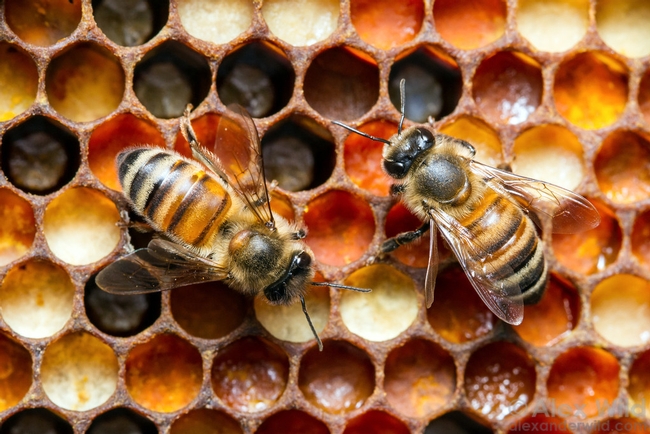
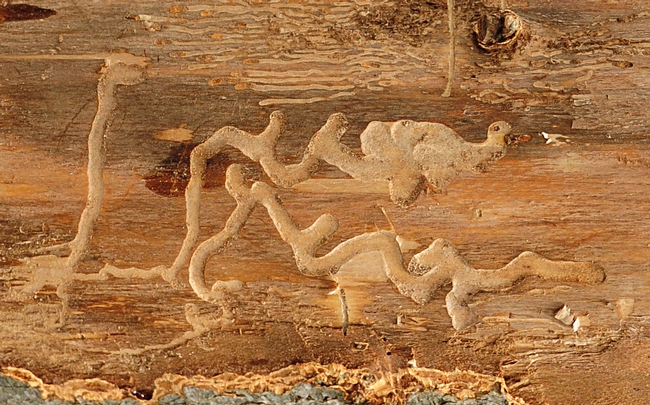
- Author: Kathy Keatley Garvey

Remember the Spruce Goose? Technically known as the Hughes H-4 Hercules, it was built by the Hughes Aircraft Company for transatlantic flight transport for use during World War II. Although it basically couldn't get off the ground, it made aviation history as (1) the largest flying boat ever built, and (2) the largest-ever wingspan. If you want to see it, it's on display at the Evergreen Aviation & Space Museum, McMinnville, Ore.
Just like the Spruce Goose, the bumble bee doesn't look flight-worthy, either.
But it is.
We saw scores of bumble bees in May of 2015 when we attended a BugShot Macro Photography Workshop, taught by noted insect photographers Alex Wild, John Abbott and Thomas Shahan at the Hastings Natural History Reserve, a biological field station owned by UC Berkeley in the upper Carmel Valley, Monterey County.
While at the four-day workshop, we had plenty of time to capture images of bumble bees in flight--and we did. We especially marveled at the yellow-faced bumble bees (Bombus vosnesenskii) foraging in a lush meadow of vetch and lupine. It was bumble bee heaven! We posted some of the images on Bug Squad.
Enter aerodynamics expert Phillip Burgers of the School of Arts and Sciences, Embry Riddle Aeronautical University, San Diego. He asked for--and received--permission to use one of the bumble bee images for his research paper for an aerospace journal.
"Your photograph is perfect, as it shows those wings flapping back-and-forth, highlighting their kinetic energy concept I am introducing in my paper," he wrote. He signed off as "Phillip Burgers, Ph.D., Aerodynamics & Performance Flight Technologies, General Atomics Aeronautical Systems, Inc."
You can read his paper, published July 29 in a special issue, Flapping Wings, Aerospace 2016, 3(3), 24; doi:10.3390/aerospace3030024. See http://www.mdpi.com/journal/aerospace/special_issues/flapping_wings#published
His illustration, titled "Evaluating the capability of generating lift by flapping wings during hover & forward flight," points out "lift," "wing reference area," "kinetic energy of wings" and "air density."
It's good to see the focus on bumble bees--whether in flight or in the Aerospace journal.



